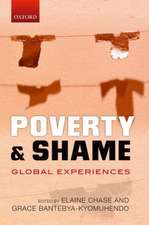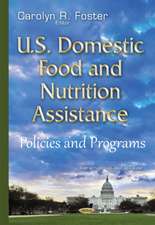The Urban Underclass
Editat de Christopher Jencks, Paul E. Petersonen Limba Engleză Paperback – apr 1991
Many believe that the urban underclass in America is a large, rapidly increasing proportion of the population; that crime, teenage pregnancy, and high school dropout rates are escalating; and that welfare rolls are exploding. Yet none of these perceptions is accurate. Here, noted authorities, including William J. Wilson, attempt to separate the truth about poverty, social dislocation, and changes in American family life from the myths that have become part of contemporary folklore.
Preț: 244.97 lei
Nou
Puncte Express: 367
Preț estimativ în valută:
46.87€ • 48.85$ • 38.81£
46.87€ • 48.85$ • 38.81£
Carte tipărită la comandă
Livrare economică 03-17 aprilie
Preluare comenzi: 021 569.72.76
Specificații
ISBN-13: 9780815746058
ISBN-10: 0815746059
Pagini: 508
Ilustrații: black & white illustrations
Dimensiuni: 152 x 229 x 31 mm
Greutate: 0.73 kg
Editura: Brookings Institution Press
Colecția Brookings Institution Press
ISBN-10: 0815746059
Pagini: 508
Ilustrații: black & white illustrations
Dimensiuni: 152 x 229 x 31 mm
Greutate: 0.73 kg
Editura: Brookings Institution Press
Colecția Brookings Institution Press
Notă biografică
Christopher Jencks is the Malcolm Wiener Professor of Social Policy at Harvard's John F. Kennedy School of Government, the author of The Homeless (Harvard, 1994) and Rethinking Social Policy: Race, Poverty, and the Underclass (Harperperennial, 1993), and the coeditor of The Urban Underclass (Brookings, 1991). Paul E. Peterson is the Henry Lee Shattuck Professor of Government at Harvard, the director of PEPG, and a senior fellow at the Hoover Institution. He is author or editor of numerous books, including The Education Gap: Vouchers and Urban Schools, with William G. Howell (Brookings, 2004 and 2006). He is coeditor (with Martin West) of No Child Left Behind? The Practice and Politics of School Accountability (Brookings, 2003).
Descriere
Many believe that the urban underclass in America is a large, rapidly increasing proportion of the population; that crime, teenage pregnancy, and high school dropout rates are escalating; and that welfare rolls are exploding. Yet none of these perceptions is accurate. Here, noted authorities, including William J. Wilson, attempt to separate the truth about poverty, social dislocation, and changes in American family life from the myths that have become part of contemporary folklore.
















